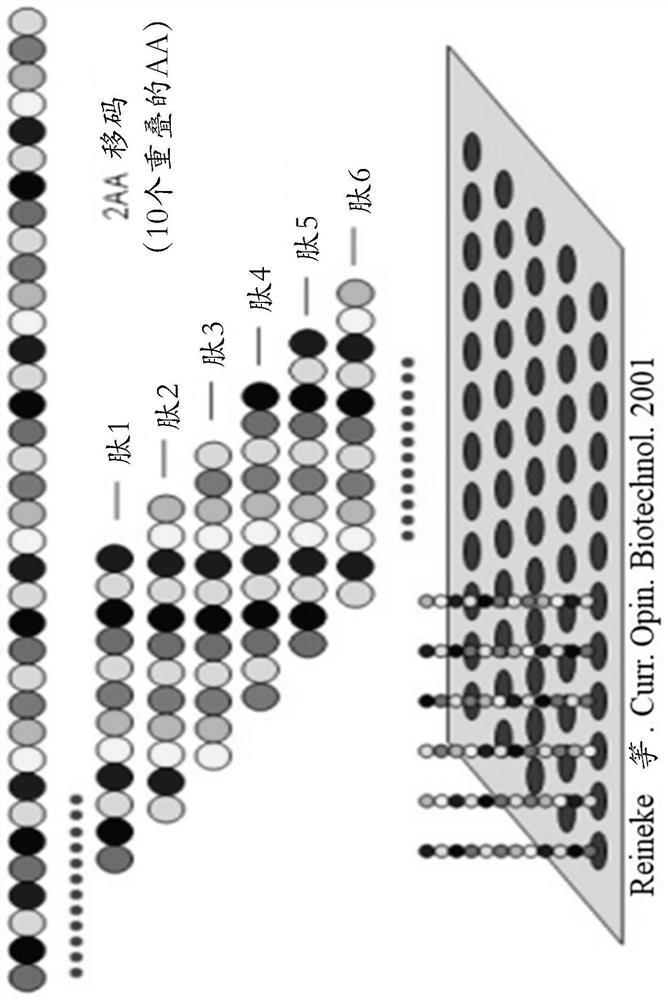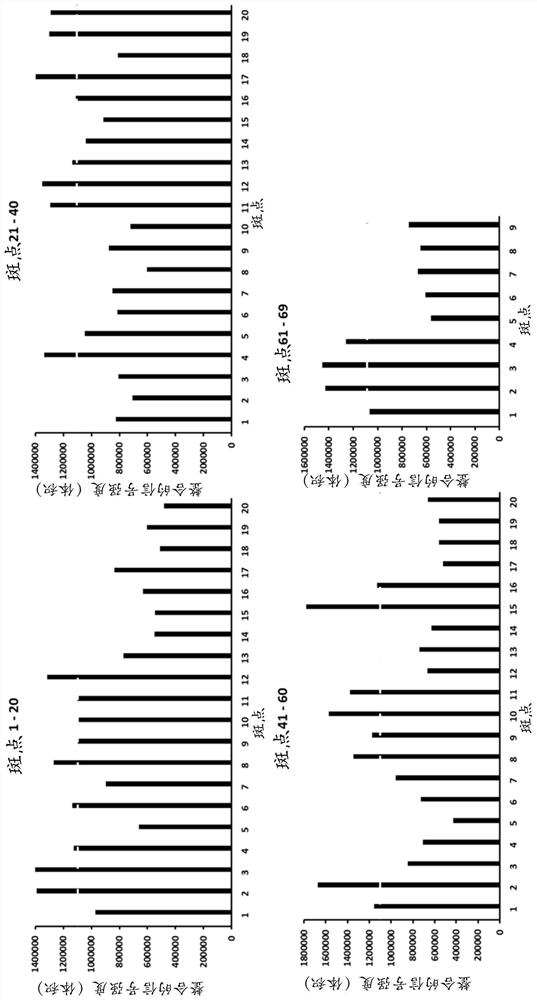Mutant vaccinia viruses and use thereof
A technology of vaccinia virus and virions, applied in the direction of viruses, viral peptides, viruses/bacteriophages, etc., which can solve the problem of reduced ability of Ab binding to peptides
- Summary
- Abstract
- Description
- Claims
- Application Information
AI Technical Summary
Problems solved by technology
Method used
Image
Examples
Embodiment 1
[0134] Materials and methods
[0135] Material
[0136] pUC57-Amp A27L, pUC57-Amp L1R, pUC57-Amp D8L, pUC57-Amp H3L, (GENEWIZ). CV-1 cells (ATCC, cat. #CCL-70). vSC20 vaccinia virus library. GeneJuice Transfection Reagent (Millipore, cat. #2703870). DMEM medium (GE Helathcare, cat. #SH30081.01), FBS (GE Healthcare, cat. #SH30070.03), DPBS (Sigma, cat. #8537). Dry ice / ethanol bath, 6-well tissue culture plates, 12 x 75–mm polystyrene tubes, disposable spatula or plunger for 1-ml syringes, sterile 2-ml sterile microcentrifuge tubes.
[0137] Cell preparation and infection with wild-type vaccinia virus
[0138] CV-1 cells (2×10 5 / well) in complete DMEM medium in the wells of a 6-well tissue culture plate and incubated to 50–80% confluence (37°C, 5% CO 2 overnight). Aliquots of parental virus were thawed and sonicated (30 sec) in ice water several times to remove clumps (cool on ice between each sonication). Dilute virus to 0.5 x 10 in complete DMEM 5 pfu / ml. The...
Embodiment 2
[0152] Neutralizing antibody (Nab) epitope determination for H3L–peptide array sequence analysis
[0153] To identify possible regions on H3L involved in NAb interactions, peptide arrays covering full-length H3L were synthesized and screened for peptides that bound anti-VV NAbs. The array starts at the N-terminus of H3L and spans the entire length of the protein sequence, with each contiguous spot containing 12 amino acids offset by 4 amino acids towards the C-terminus along the sequence, i.e., each spot in the array has 8 - The residue overlaps with a previous spot. Cellulose membranes containing synthetic H3L peptide arrays were then screened to identify peptides that bind to anti-VV polyclonal Nabs (Abeam, ab35219). Briefly, membranes were placed in Millipore H 2 Wash three times in O for 5 minutes each, and block with 5% (wt / vol) milk-PBS (MPBS) overnight at 4°C. 4 μg / mL NAb was incubated with the membrane in MPBS for 3 h at room temperature with gentle agitation. Af...
Embodiment 3
[0162] NAb epitope determination by H3L–alanine scanning of identified peptides
[0163] To further map the NAb epitopes and elucidate the key residues on the H3L peptides identified by our peptide array studies, a series of ELISAs were performed with the 9 identified peptides and their alanine-substituted variants (Figure 2). Nine peptide variants identified by peptide arrays were synthesized by alanine substitution (GenScript USA Inc. NJ, USA).
[0164] Table 4
[0165] A total of 80 variant peptides were synthesized
[0166]
[0167]
[0168]
[0169] Native peptides (unmutated, as shown in bold above, SEQ ID NO: 89-97) were biotin-tagged (N-terminal). 96-well Pierce™ NeutrAvidin-coated plates (Thermo Fisher, 15507) were rinsed with PBST and incubated overnight in MPBS (blocking buffer, 100 μL / well) at 4°C. The blocking buffer was discarded and 100 μL of biotinylated peptide at 200 ng / mL was added to the plate and incubated at 4°C for 90 min. Simultaneously...
PUM
 Login to View More
Login to View More Abstract
Description
Claims
Application Information
 Login to View More
Login to View More - R&D
- Intellectual Property
- Life Sciences
- Materials
- Tech Scout
- Unparalleled Data Quality
- Higher Quality Content
- 60% Fewer Hallucinations
Browse by: Latest US Patents, China's latest patents, Technical Efficacy Thesaurus, Application Domain, Technology Topic, Popular Technical Reports.
© 2025 PatSnap. All rights reserved.Legal|Privacy policy|Modern Slavery Act Transparency Statement|Sitemap|About US| Contact US: help@patsnap.com



